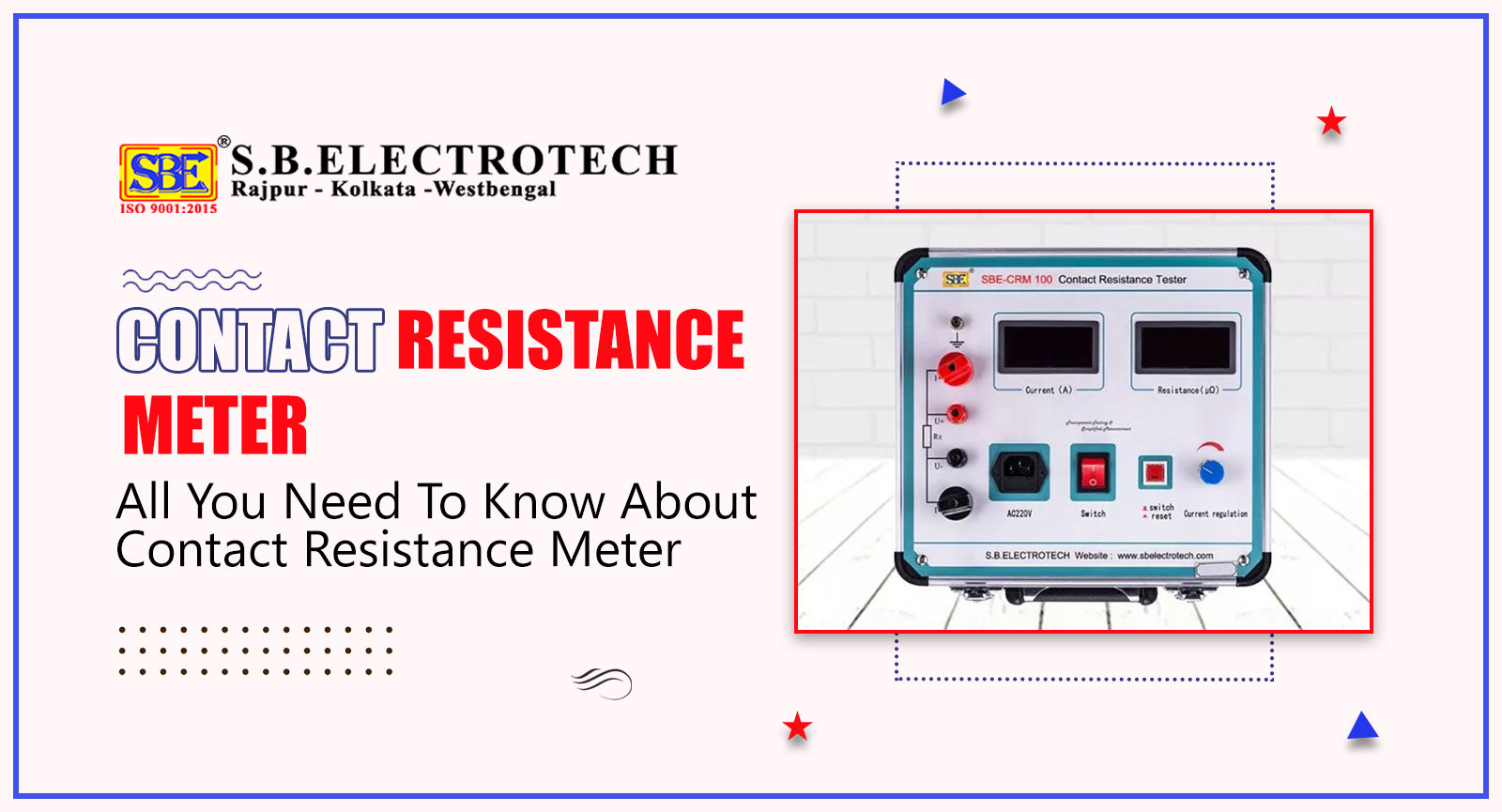When two contacts make physical contact, there is a certain amount of resistance to current flow that can be attributed to their respective surfaces and other factors (in the closed condition of the device). This can take place between the contacts of Circuit breakers. Many switching devices include contactors, relays, switches, and connectors. Electrical connections can be tested for their resistance via Contact Resistance Meter testing or Ductor testing. Any two conductor connections, like those seen in cables or busbars, qualify.
Contact Resistance Meter – Exactly Why Is a Contact Resistance Test Necessary?
The health and functionality of a circuit breaker can be determined by inspecting its connections regularly. Arcing, phase loss, and even fire can result from contacts that aren’t properly maintained or damaged. Because increased Contact Resistance Meter can reduce current carrying capacity and increase losses, this test is crucial for contacts that carry a lot of current (such as switchgear busbars).
A micro- or milli-ohmmeter, or a low ohmmeter, is typically used to test doctors. Fretting corrosion of contacts can be diagnosed and avoided with the aid of a Perfluoroelastomer Ffkm O-Rings.
Contact Resistance Meter – The Procedures of Contact Resistance Testing:
Visual inspection and Contact Resistance Meter manufacturer in India checks are the most typical tests performed on a circuit breaker’s contacts.
- First, pitting marks from arcing and worn or distorted contacts can be spotted during a visual inspection of the circuit breaker.
- The second test is a measurement of the contact resistance. It is done by infusing a constant current between 100A and 300A via the contacts and measuring the resulting voltage drop. For this evaluation, we employ contact resistance measuring equipment. This value of resistance is then determined by applying Ohm’s law.
- The two checks must be performed simultaneously because there are instances where contacts exhibit a high contact resistance despite being in a damaged state. Therefore, good contact resistance and passing visual inspection require a connection to be considered functional.
Contact Resistance Meter – Tests for Contact Resistance Usually Involve the Following Procedures:
- Two currents are used to conduct contact resistance test. Injection and two potential leads for voltage drop measurement; the voltage cables should be connected as close to the tested connection as feasible and always inside the circuit created by the linked current leads.
- Microprocessor-controlled micro-ohmmeters calculate contact resistance from voltage drop measurements. To reliably compare current and future data for trend analysis, it is crucial to keep measurement settings stable throughout a contact resistance test. Therefore, periodic measurements must be conducted in weld, with the same test leads, the same position, and under the same conditions in order to identify when a joint, connection, or device may become dangerous.
Conclusion
Contact resistance is an additional factor that might affect thermal conductivity measurements, especially for heat transfer in granular materials. When fluid flow changes channels, the hydrostatic pressure drops (like the voltage drops when a battery is discharged). SB Electrotech is one of the best Contact Resistance Meter supplier in India. Evaluation of AC High Voltage Tester and contact resistance reveals vital information on contact health and current carrying capacity.

S.B.ELECTROTECH
S.B. Electrotech is a company that specializes in manufacturing of electrical and electronic testing and measuring instruments. With years of expertise in this field, we ensure to provide high quality, safe, and sustainable products.




